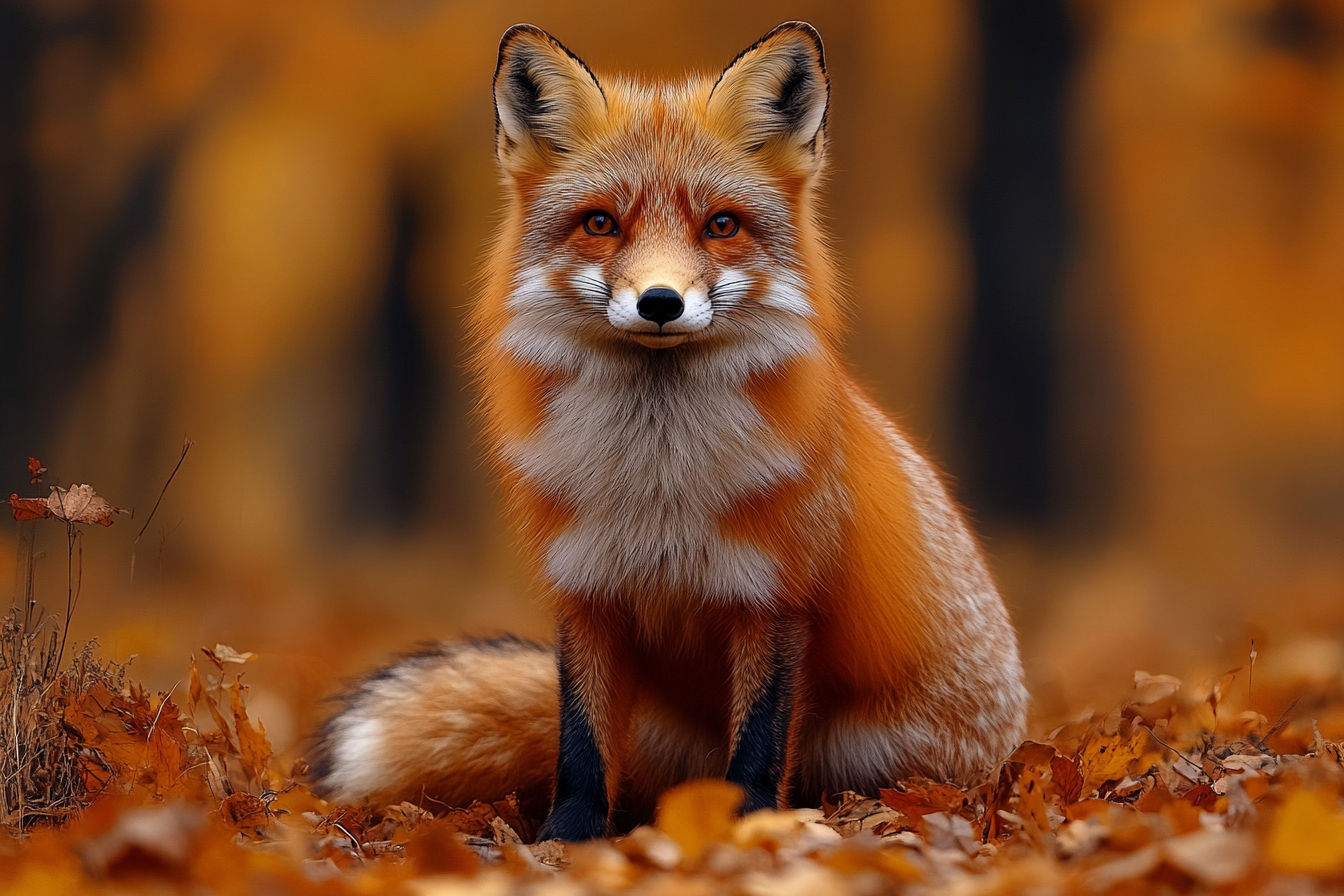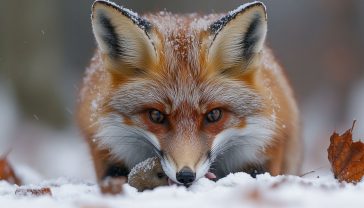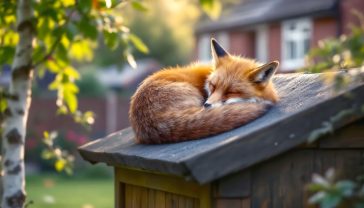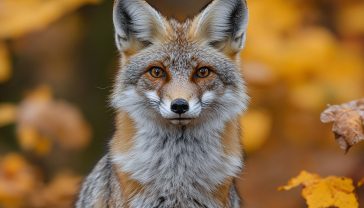The Vixen: Understanding the Female Fox and Her Role in Nature and Culture
What exactly is a vixen? Explore the intriguing role of the female fox in both the wild and in cultural language. Discover why the vixen is so vital yet often misunderstood.

This post may contain affiliate links. If you make a purchase through these links, we may earn a commission at no additional cost to you.
Did you know that the term vixen is used exclusively for a female fox? Beyond this simple definition lies a rich story of biology, behaviour, and cultural symbolism. From the nurturing mother raising her kits to the sharp-witted figure in folklore, she holds a unique place in both nature and human imagination.
But what makes her truly special? Let’s explore her world—her role in the wild, her impact on ecosystems, and the surprising cultural meanings behind her name.
What Is a Vixen? More Than Just a Female Fox
The word comes from the Old English fyxen, meaning “female fox.” Remarkably, this term has remained unchanged for centuries, consistently applied to all fox species—from the fiery-coated red fox (Vulpes vulpes) to the elusive Arctic fox (Vulpes lagopus) and the desert-dwelling fennec fox (Vulpes zerda).
But she’s more than just a female counterpart. She plays a vital role in the survival of her species, balancing sharp instincts with nurturing care.
Biological and Behavioural Traits of a Vixen
At first glance, male and female foxes appear almost identical—sleek bodies, bushy tails, pointed ears. However, they tend to be slightly smaller and lighter, with a more refined build. This difference may seem minor, but it reflects the specialised role, especially when it comes to raising young.
Motherhood: The Heart of the Fox Family
A vixen’s life revolves around motherhood. Reaching sexual maturity at about one-year-old, she typically breeds once a year during the winter. After a gestation period of around 52 days, she gives birth to a litter of kits—often in the safety of a den.
For the first few weeks, she rarely leaves the den, focusing entirely on nursing and protecting her young. The male, or reynard, takes on the role of provider, bringing food to the family. As the kits grow, she shifts from caregiver to teacher, passing on essential survival skills like hunting and evading predators.
💡 Did you know? A vixen’s dedication to her kits is so intense that she may risk starvation rather than leave them unprotected in the early weeks.
Social Behaviour: More Than a Solitary Hunter
While foxes are typically considered solitary, the vixen challenges this stereotype. She plays a crucial role in the social structure of a fox family—known as a skulk. During breeding season, vixens are especially vocal, using a distinctive scream-like call to communicate.
Her protective instincts shine when the kits are involved. She becomes fiercely territorial, showcasing behaviours that highlight her leadership within the family unit.
Cultural Significance: The Vixen in Language and Lore
The term vixen has ventured far beyond its zoological roots. In English, it’s sometimes used metaphorically to describe a woman perceived as fierce, sharp-tongued, or cunning.
But why the negative twist? This stereotype likely emerged from the fox’s reputation in folklore as a trickster—clever but sometimes deceptive. Over time, these traits became unfairly linked with femininity, giving rise to the term’s sharper human connotation.
📚 Interesting insight: In literature and popular culture, the “vixen” archetype often represents a woman who defies traditional roles—bold, intelligent, and unapologetically independent.
However, it’s essential to distinguish this cultural layer from the natural role, which is defined by strength, intelligence, and nurturing care.
The Vixen’s Role in Ecosystems: A Key Predator
Beyond her family duties, she plays a crucial ecological role. As a skilled predator, she helps control populations of small mammals, birds, and insects. By doing so, she maintains balance within her habitat—whether it’s a rural woodland, urban park, or Arctic tundra.
🌿 Why does this matter? Without predators like the vixen, certain species could overpopulate, leading to ecosystem imbalances.
Interestingly, they’re known for their cautious nature. Unlike their male counterparts, female foxes are less likely to take risks, especially when caring for kits. This careful approach is key to the survival of both her offspring and the broader fox population.
Species-Specific Insights: How Vixens Adapt Across Environments
Foxes are among the most adaptable animals on the planet, and vixens lead the way in this resilience. Let’s look at how different species adjust to their environments:
- Red Fox (Vulpes vulpes): Common across Europe, Asia, and North America, the red fox vixen thrives in diverse environments—from forests to cities. Urban vixens have even adapted to human schedules, becoming more nocturnal to avoid encounters.
- Arctic Fox (Vulpes lagopus): In the harsh Arctic tundra, the arctic fox vixen’s thick white coat provides essential camouflage. Her dens are often reused for generations—a testament to the survival wisdom passed down through fox families.
- Fennec Fox (Vulpes zerda): The smallest fox species, fennec vixens live in the deserts of North Africa. Their oversized ears help regulate body temperature, while their dens protect kits from the scorching sun.
Each one, regardless of species, embodies adaptability—shaping her behaviour and parenting strategies to fit her surroundings.
What Makes the Vixen Truly Remarkable?
She’s far more than just a female fox—she’s the beating heart of the fox family and a master of survival. With a delicate balance of strength, intelligence, and instinct, the vixen plays multiple roles that make her one of nature’s most fascinating creatures. But what truly sets her apart?
Let’s explore the remarkable qualities that define her:
A Nurturer: Devotion Beyond Measure
Motherhood is at the core of her life. After giving birth, she devotes herself entirely to her kits—rarely leaving the den during the first crucial weeks. Her unwavering commitment means she often goes without food, relying on the male to provide, all to keep her young safe and warm.
But her role extends beyond simple care. She becomes the first teacher her kits will ever know. She patiently guides them through early lessons—demonstrating hunting techniques, warning of predators, and helping them master the art of survival.
💡 Did you know? Her parenting doesn’t stop once her kits leave the den. She continues mentoring them for months, ensuring they’re ready to face the wild alone. Her nurturing nature ensures the survival and success of the next generation.
A Strategist of Survival Tactics
Every move she makes is calculated. She chooses den sites with care—often selecting locations with multiple escape routes to evade predators. Whether in dense forests, urban gardens, or Arctic tundras, her decisions are driven by one priority: safety for her kits.
Her hunting strategies are equally impressive. With precise timing and silent movements, she outwits prey and predators alike. She knows when to be bold and when to blend into the background. This strategic thinking ensures not only her survival but the continuation of her bloodline.
🌙 Ever seen a fox dart across a moonlit street? That silent shadow is frequently a vixen—hunting under the cover of darkness, proving that intelligence is her sharpest tool.
A Protector: Courage in the Face of Danger
When danger looms, she transforms from a nurturing mother into a fearless protector. Her cautious nature gives way to boldness when her kits are threatened. She will defend her den fiercely, using cunning distractions to lead predators away or, when necessary, standing her ground.
Foxes are typically known for avoiding conflict—but her protective instincts override fear. Her courage ensures her kits have a fighting chance in a world where threats come from all directions.
⚡ Remarkably, some vixens have been observed risking encounters with larger predators—such as badgers or coyotes—to protect their young. In the wild, few things are more formidable than a mother defending her own.
An Ecological Steward: Balancer of Nature
Beyond her family, she plays a crucial role in maintaining ecological balance. As a skilled predator, she keeps populations of small mammals, birds, and insects in check, preventing overpopulation that could disrupt local ecosystems.
This natural population control supports healthier habitats, promoting biodiversity. From rural woodlands to urban parks, vixens contribute quietly but significantly to environmental harmony.
🌍 What’s more, they adapt their hunting techniques based on the ecosystem’s needs—sometimes targeting pests like rodents in cities, indirectly supporting human agriculture and public health.
The Essence of the Vixen: A Symphony of Strength and Subtlety
In the end, what makes her truly remarkable is how seamlessly she blends power with poise. She embodies:
- Wisdom, choosing when to fight and when to flee.
- Patience, guiding her young with gentle persistence.
- Purpose, playing a vital ecological role.
- Adaptability, thriving in environments ranging from icy tundras to bustling cities.
She teaches us that strength doesn’t always roar—sometimes, it moves in silence, waits for the right moment, and outsmarts the challenge. She is a nurturer, protector, strategist, and steward—a creature whose quiet intelligence shapes the survival of her species and the balance of her world.
💬 Next time you catch a glimpse of a fox’s bushy tail disappearing into the undergrowth, remember: you might have just witnessed the quiet power of a vixen—a mother, a leader, and a survivor in her own right.
Conclusion: The Vixen’s Lasting Legacy
From the forests of Europe to the deserts of Africa, she plays a central role in the survival and success of her species. Her life is a balance of intelligence, caution, and maternal devotion—qualities that have helped foxes thrive for millennia.
While cultural interpretations of the word have added layers of meaning—some flattering, others less so—the true vixen remains a symbol of resilience and cunning.
✨ Next time you spot a fox, remember the powerful female at the heart of its story, guiding the next generation with quiet strength and sharp intelligence.
Further Reading: Explore More About Foxes and Vixens
- BBC Wildlife – Foxes: Facts, Habitats, and Behaviour
- The BBC Wildlife section offers well-researched articles on fox species, behaviour, and their roles in ecosystems, perfect for readers interested in UK wildlife.
- National Geographic – Foxes: Habits, Diet, and Adaptations
- National Geographic provides engaging, science-backed content with vivid imagery and in-depth explorations of animal behaviour, including foxes’ survival strategies across environments.
- Wildlife Trusts – Foxes in Britain
- A great source for readers who want to understand the ecological role of foxes (including vixens) in British ecosystems, alongside conservation information.
- Animal Diversity Web (University of Michigan) – Vulpes vulpes Profile
- Offers detailed scientific data on the red fox, including physical characteristics, reproductive behaviour, and ecological significance—ideal for readers wanting a more academic approach.
- Smithsonian’s National Zoo – Fox Species Fact Sheets
- Focuses on different fox species worldwide, with concise fact sheets covering unique adaptations, including Arctic and fennec foxes, providing global context.
- The Mammal Society – British Foxes: Distribution and Ecology
- For readers seeking robust, research-driven content, The Mammal Society provides scientific insights into fox populations and their ecological roles in Britain.






